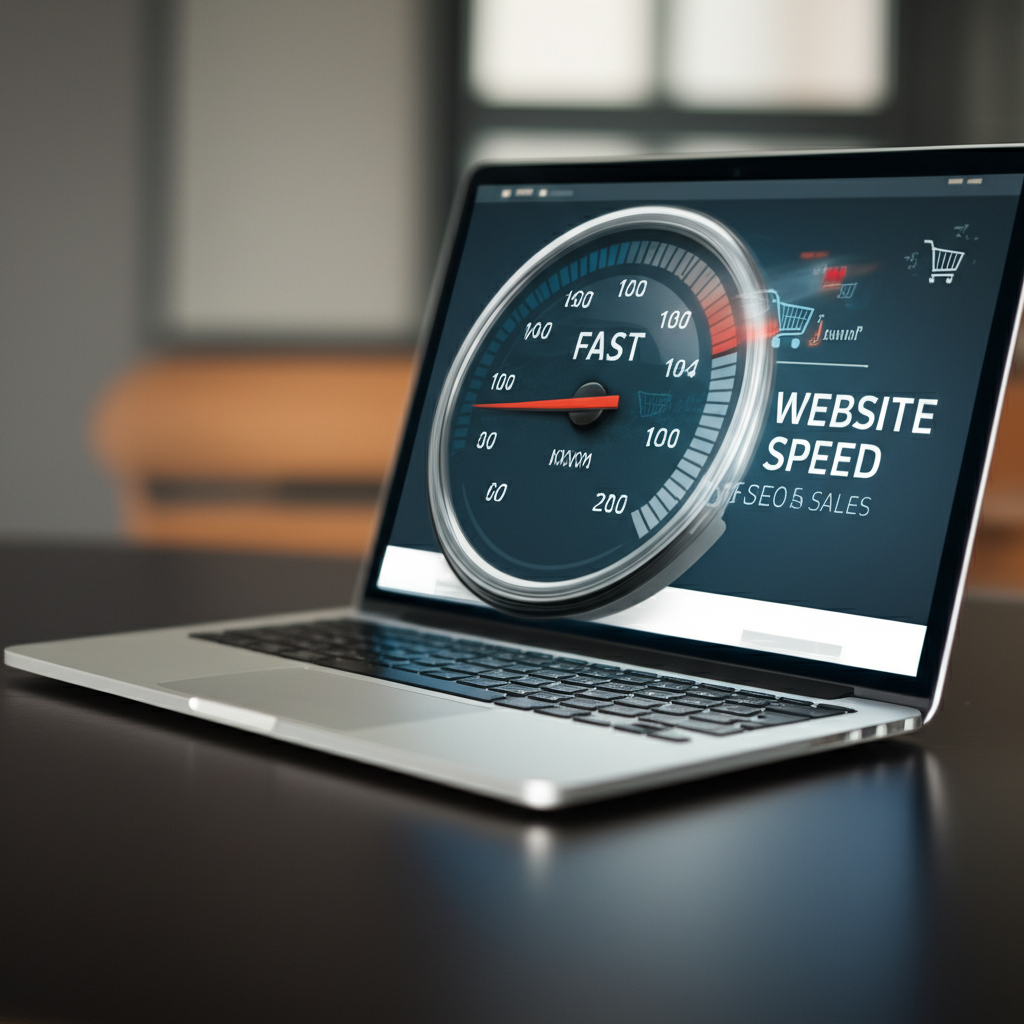- Why Website Speed Matters for SEO
- Impact of Website Speed on Google Rankings
- Core Web Vitals and Their Role in Website Speed Optimization
- Website Speed: A Critical Factor for Sales
- The Relationship Between Website Speed and Conversion Rates
- Enhancing User Experience Through Optimized Website Speed
- Strategies for Improving Website Speed
Website Speed: Crucial for SEO & Sales
Website speed is a critical factor for both search engine optimization (SEO) and sales. In today’s fast-paced digital world, users expect websites to load quickly and efficiently. A slow-loading website can lead to higher bounce rates, lower conversion rates, and ultimately, lost revenue. Search engines also recognize the importance of website speed, using it as a ranking factor in their algorithms. This means that a faster website can improve your search engine rankings, leading to increased organic traffic and visibility.
Why Website Speed Matters for SEO

Google and other search engines prioritize user experience. A key element of a positive user experience is a fast-loading website. Slow loading times frustrate users and can lead them to abandon your site before they even see your content. This behavior signals to search engines that your website isn’t providing a good user experience, which can negatively impact your rankings. Furthermore, Google has explicitly stated that page speed is a ranking factor for both desktop and mobile searches.
Impact of Website Speed on Google Rankings
Google’s algorithms are complex and constantly evolving, but website speed has consistently remained a significant ranking factor. Faster websites are more likely to rank higher in search results, giving them a competitive edge. This is particularly true for mobile searches, where users are often on slower connections and have less patience for slow-loading websites. Google’s emphasis on mobile-first indexing further underscores the importance of optimizing website speed for mobile devices.
Core Web Vitals and Their Role in Website Speed Optimization
Core Web Vitals are a set of metrics that measure key aspects of user experience, including loading performance, interactivity, and visual stability. These metrics are crucial for understanding how users perceive your website’s speed and overall usability. Optimizing your website for Core Web Vitals can significantly improve your search engine rankings and provide a better user experience. The key metrics within Core Web Vitals are:
Largest Contentful Paint (LCP): Measures the time it takes for the largest content element on the page to become visible.
First Input Delay (FID): Measures the time it takes for the browser to respond to the user’s first interaction with the page.
Cumulative Layout Shift (CLS): Measures the visual stability of the page and how much elements shift unexpectedly during loading.
Website Speed: A Critical Factor for Sales
Beyond SEO, website speed directly impacts your bottom line. A slow website can drastically reduce conversion rates. Users are less likely to complete a purchase, fill out a form, or engage with your content if they have to wait for your website to load. Every second of delay can translate into lost revenue and missed opportunities.
The Relationship Between Website Speed and Conversion Rates
Studies have shown a strong correlation between website speed and conversion rates. Even small improvements in loading time can lead to significant increases in conversions. For example, a one-second delay in page load time can result in a 7% reduction in conversions. This highlights the importance of investing in website speed optimization to maximize your sales potential.
Enhancing User Experience Through Optimized Website Speed
A fast-loading website provides a seamless and enjoyable user experience. Users can quickly access the information they need, browse your products or services with ease, and complete their desired actions without frustration. This positive experience fosters trust and encourages repeat visits, ultimately leading to increased customer loyalty and higher lifetime value.
Strategies for Improving Website Speed
There are several effective strategies you can implement to improve your website speed:
Optimize Images: Compress images without sacrificing quality to reduce file sizes.
Leverage Browser Caching: Allow browsers to store static assets like images and CSS files, reducing the number of requests to the server.
Minify CSS and JavaScript: Remove unnecessary characters from code files to reduce their size.
Use a Content Delivery Network (CDN): Distribute your website’s content across multiple servers geographically closer to users, reducing latency.
Choose a Fast Web Hosting Provider: A reliable and fast hosting provider is essential for optimal website speed.
* Implement Mobile-First Design: Design your website with mobile users in mind, ensuring it loads quickly and efficiently on mobile devices.
By prioritizing website speed, you can significantly improve your SEO, enhance user experience, and boost your sales. Investing in website speed optimization is a crucial step for any business looking to succeed in today’s competitive online landscape. Regularly monitor your website’s speed and implement necessary improvements to stay ahead of the curve and maximize your online potential.











Leave a Reply